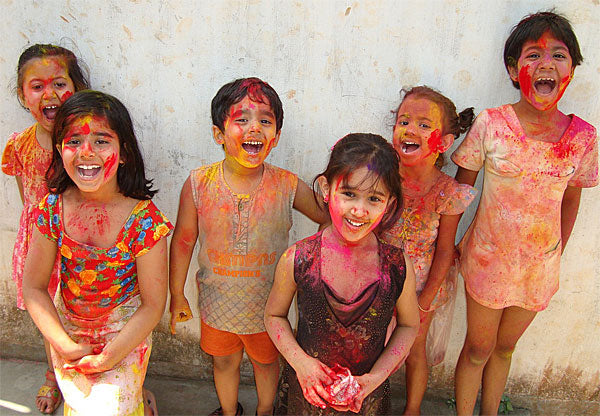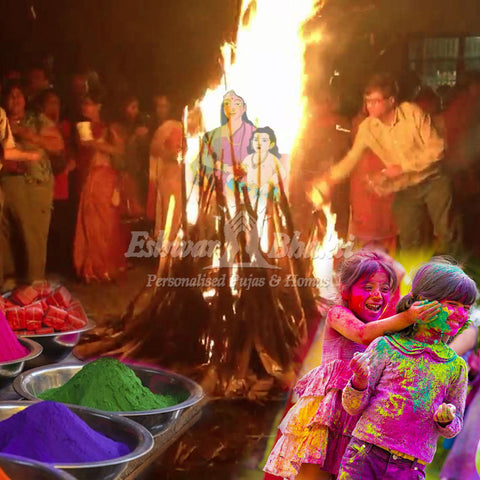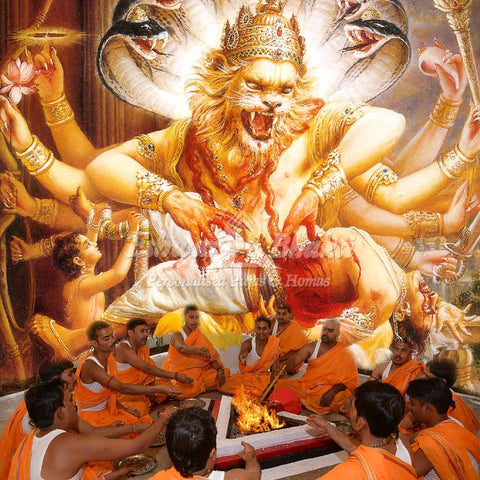Holi festival
 Festivals celebrated in India are deeply rooted with spiritual importance and values for life. All the festival occasions highlight several principles to be followed in life for evolution towards godliness. Unlike any other celebration, festivals of India takes us more towards Godliness, divinity, bringing our mind out from the negativities, etc.. Holi is such a festival celebrated during the spring season with much fervor in India. It is celebrated as the festival of colours and love, symbolising our mind with its emotions. Like any other festival rich with culture and tradition, Holi also signifies the victory of good over the evil & ignorance. Holi is celebrated on the occasion of arrival of the spring. It is to be noted that with the end of winter season, Holi brings in the fragrance of flowers creating an aura and ambience of warmth and happiness. Holi celebration always creates an enchanting mood among all the people irrespective of their age. Smearing each other with different colours along with the delicious gujiyas, this holy festival too brings in the ambience of cheer and happiness across all people. For centuries, Holi is the one and only festival in India uniting people of all sects, castes, age groups, and even generations.
Festivals celebrated in India are deeply rooted with spiritual importance and values for life. All the festival occasions highlight several principles to be followed in life for evolution towards godliness. Unlike any other celebration, festivals of India takes us more towards Godliness, divinity, bringing our mind out from the negativities, etc.. Holi is such a festival celebrated during the spring season with much fervor in India. It is celebrated as the festival of colours and love, symbolising our mind with its emotions. Like any other festival rich with culture and tradition, Holi also signifies the victory of good over the evil & ignorance. Holi is celebrated on the occasion of arrival of the spring. It is to be noted that with the end of winter season, Holi brings in the fragrance of flowers creating an aura and ambience of warmth and happiness. Holi celebration always creates an enchanting mood among all the people irrespective of their age. Smearing each other with different colours along with the delicious gujiyas, this holy festival too brings in the ambience of cheer and happiness across all people. For centuries, Holi is the one and only festival in India uniting people of all sects, castes, age groups, and even generations.
How to Celebrate Holi: First is to develop an attitude of “forget and forgive”. This is one important change to be brought in life, not only during the time of Holi. Every gathering, cheer, festive moments aim to bring in peace and harmony. This cleanses our mind automatically. People put tilak on each other’s forehead symbolising acceptance. This is without any barrier on the age and gender. Holi is to rejoice the moments in gatherings, spreading colour on each other. Thanks giving for good harvest is also observed on this auspicious occasion. All these brings lot of positive vibrations around us. Though Holi is considered to be a Hindu festival, even non-Hindus celebrate Holi.
Holi celebrations start with Holika Dahan, on the previous night of Holi. People perform rituals in front of a bonfire by praying for the destruction of the inner evil. “Dahan” in hindi means to burn, Holika, the demon lady character, as explained in Vedic scriptures was killed in fire. Demoness symbolises the evil inside us irrespective of whether we are aware or not. The following morning is the time when people will come out of their houses, on to the streets. Celebration of Holi starts by smearing colours, throwing and drenching in coloured water. Water guns, bursting of the balloons filled with coloured water, etc. are some of the ways in which the youngsters celebrate Holi.
Significance of Holi : Everyone joins together to celebrate the oneness of humanity, that is the message of celebrating Holi. The popular belief is that the feelings and emotions within us is symbolised through these colours. Red represents anger, green for jealousy, yellow for happiness, white relates to peace and harmony, pink for love, and so on. Individual human mind can be seen as a fountain of colours that keep changing its hue. Life should be taken like the Holi celebration by seeing each colour clearly. If your life is like Holi, where each colour is seen clearly it adds charm to the life. Life will become harmonious if we are able to regulate all the emotions by understanding and seeing them clearly. Life has to be colourful, just like Holi with vibrant and clear colours. We are all bound to take up different roles in our everyday life. Clarity on the role, emotions, reactions, etc. needs to be understood to make the life peaceful and harmonious.
As a child we have a joyous nature. After becoming adult, we all have to play the role of father or mother, brother or sister, etc. We are also prone to mistakes when the roles are mixed. At the same time, colourful and vibrant Holi celebrations reminds us about the full involvement even in situations when we take up the role. If emotions are handled with knowledge, it becomes colourful. Entire life becomes peaceful and harmonious when you take celebrations in this way.

The Legend of Prahlada: Hiranyakashpu was the king of demonic Asuras. According to Bhagvata Purana, he got a boon from Lord Shiva that he can neither be killed by a man or an animal. After getting this boon, he started showing his daemonic nature. He started killing people for not worshipping him as the supreme God. Prahlada was his son. Prahlada was fully devoted to Lord Vishnu. He never agreed to this compulsion. Just because of this reason, Hiranyakashpu became furious and tried to kill Prahlada through several ways, but all in vain. He then asked his sister Holika to sit on a pyre along with Prahlada. The aim was to burn Prahlada by protecting herself with the help of divine cloak. But the reverse happened. The cloak flew away from her body to protect Prahlada and Holika was burnt to ashes. Finally, one of the avatar (incarnation) of Lord Vishnu, Narasimha (half man & half lion) killed Hiranyakashpu by emerging from a pillar. Beginning of Holi thus starts with Holika Dahan, symbolising the end of evil.
The Legend of Krishna: When Lord Krishna was a baby, a demoniac lady called Putana fed Him poisonous milk. Krishna turned blue after drinking her milk. Krishna always used to bug her mother Yashoda about his color. One day, Yashodha advised Krishna to smear her face with any colour of His choice. Krishna just obeyed. From then on, this day is marked as the festival of Holi. People smear others’ faces and body with colour as a gesture of love and affection. There are people who worship by smearing the deities of Radha and Krishna with colours.
The celebration of Holi falls on the last full moon of the year. And then the Hindu New Year starts from the corresponding full moon. The tradition is to burn all the old items at our home prior to the last full moon, followed by playing Holi with colours. Holi breaks all the barriers of caste and creed in the society and people of all ages celebrate together. It's a celebration to unite everyone.


